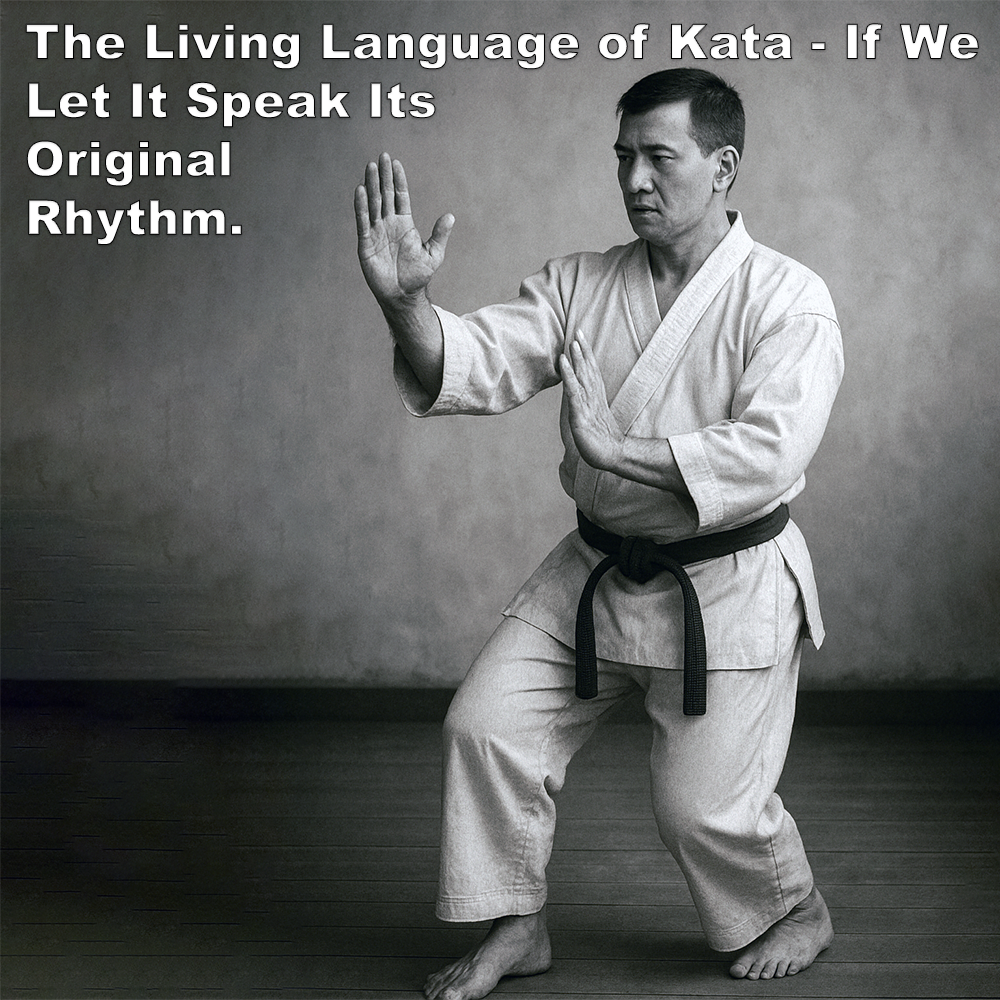
(Approx 2 minute 35 second read)
Over the years, I’ve had more than one conversation with experienced martial artists – and those with no interest in kata – about its purpose and function.
.
One question that comes up repeatedly is whether kata, as it’s practiced today, is really full of usable fighting techniques, or if it has become something else entirely – more of a tradition, just a performance.
.
Mostly, I have to admit that it probably doesn’t function well in reality for most people as it’s taught today.
.
If kata was originally intended to teach fighting principles, why do some parts appear more like choreography, designed for an audience or to look aesthetically pleasing, rather than something meant to be applied in real-world situations? (It’s a rhetorical question)
.
It’s vital to understand that, at its core, it isn’t meant to be a performance. It’s a blueprint, a template – a record of the movement patterns used in combat. Over time, however, the way it’s practiced has shifted.
.
Today it’s mostly focused more on its performance aspects – making it slower in some parts, faster in others, a screaming ‘kiai’, and more ritualistic – rather than on its original intent: to be a tool for combative understanding and application.
.
Some people asked me about the slow, segmented movements that have become common in modern performances.
.
They raise valid concerns: Why do we see so many slow sequences? Why is the flow often interrupted with pauses? These pauses seem out of place when we think about combat, where things move fast and with intent.
.
To answer this, we need to consider the purpose of kata. In my opinion, historically, it may not have been designed to be performed slowly or in segments for effect. It was a reflection of real partner drills – a way to capture the movements and sequences of combat that could later be practiced solo.
.
Shōshin Nagamine, founder of Matsubayashi-ryu and one of the most respected Okinawan karate masters, wrote: “The kata are the essence of karate. They express the transition from one technique to another, and should be practiced with natural movement and rhythm.” (The Essence of Okinawan Karate-Do)
.
This supports the idea that kata was originally performed in a flowing, realistic manner – mirroring the rhythm of actual fighting, not broken into dramatic pauses or overemphasized ‘kiai’s’.
.
In its original form, kata likely flowed smoothly and continuously, without pausing to draw attention to a particular technique or to emphasize control. In a real confrontation, you don’t stop mid-technique, you execute the technique with intent and move forward.
.
Some may argue that certain slow sections of kata reflect grappling or powerful techniques that need to be “felt” in the moment. While that may be true in some interpretations, I believe that if kata was truly a record of combative movement, it would have been performed with a natural, continuous rhythm – just like the partner drills that inspired it.
.
The overly long pauses and slowed-down sequences we see today may serve a purpose in teaching, for demonstration or for competition, but they are likely modern adaptations – perhaps introduced for clarity, standardization, or simply to appeal to an audience.
.
Kata itself isn’t the problem – it’s what it has become in the hands of modern practitioners. We’ve turned it into something static and performative, rather than seeing it as the living, breathing tool it was always meant to be.
.
If we return to its functional roots, we might find that kata still holds the key to truly effective principles and techniques – but only if we stop treating it as performance, or a way to pass a grade, and begin using it as a reflection of real combat.
.
.
Written by Adam Carter
